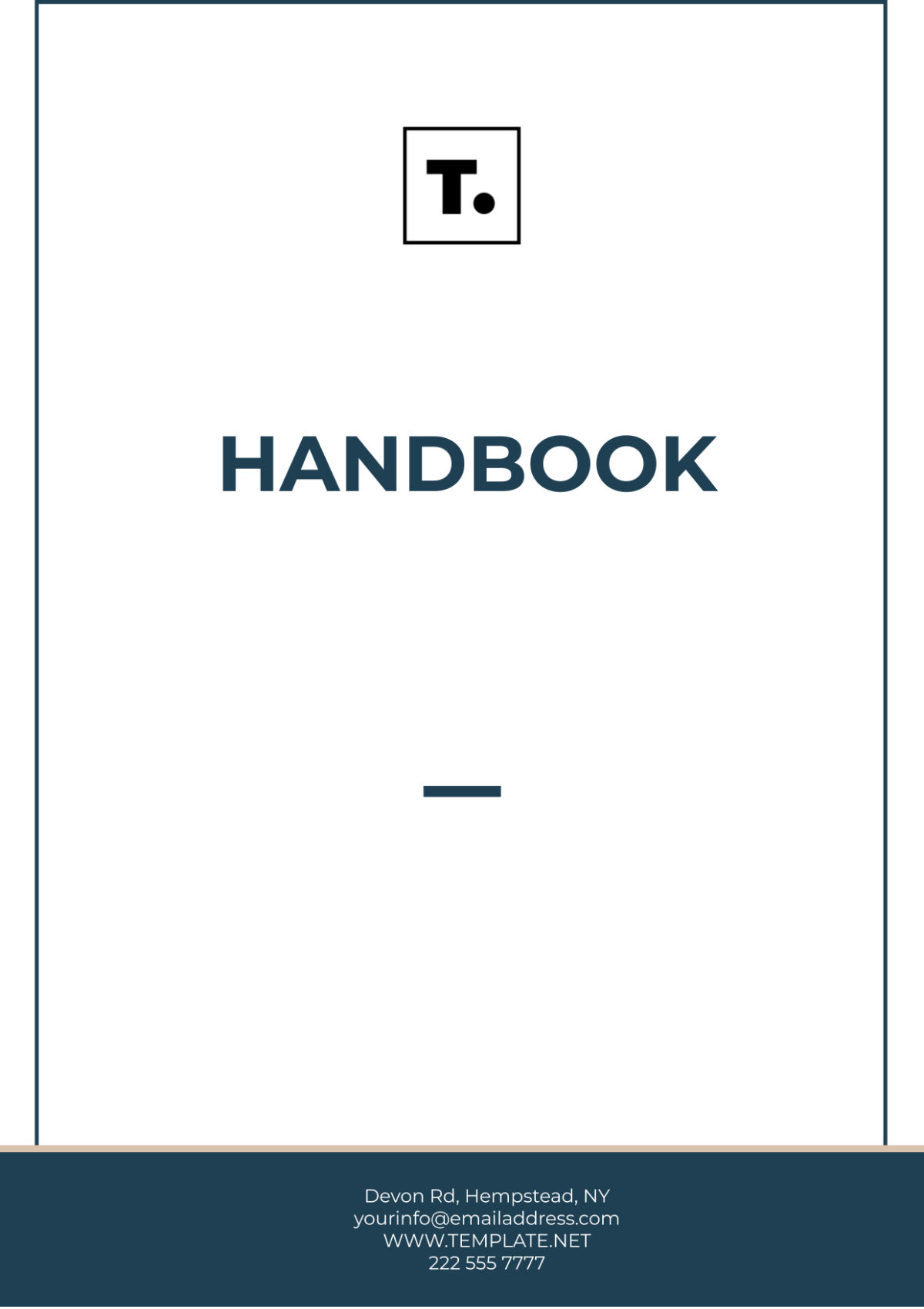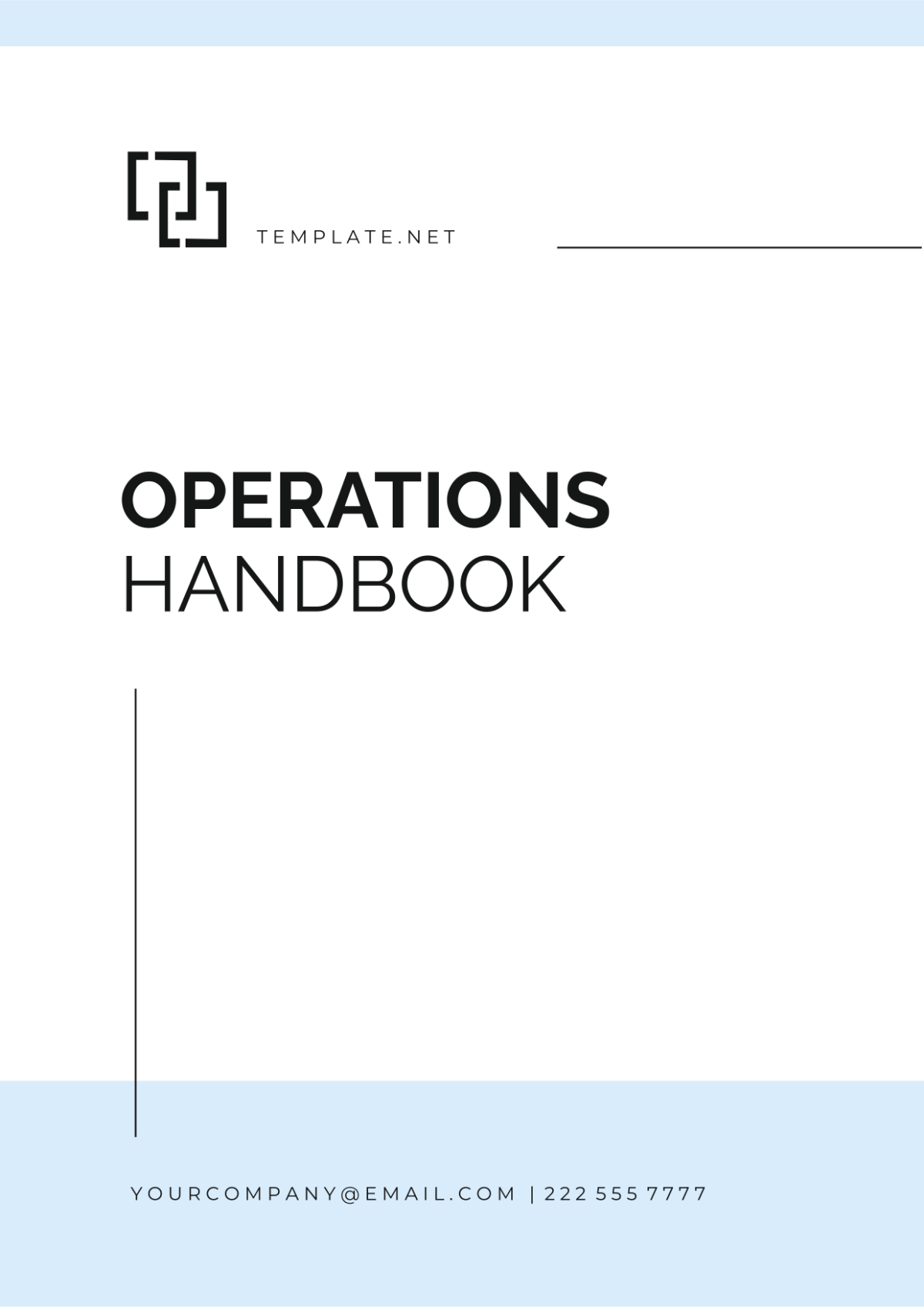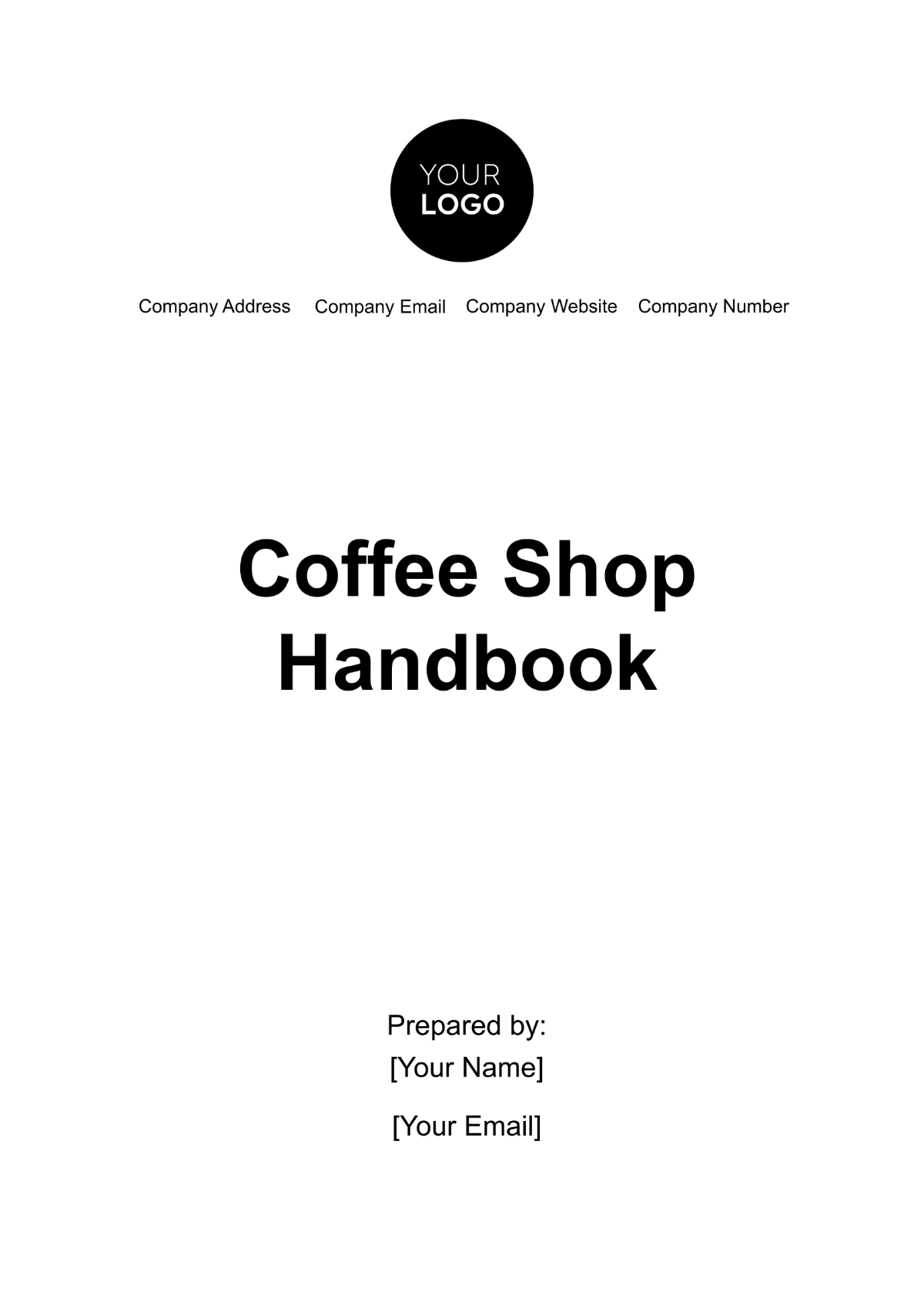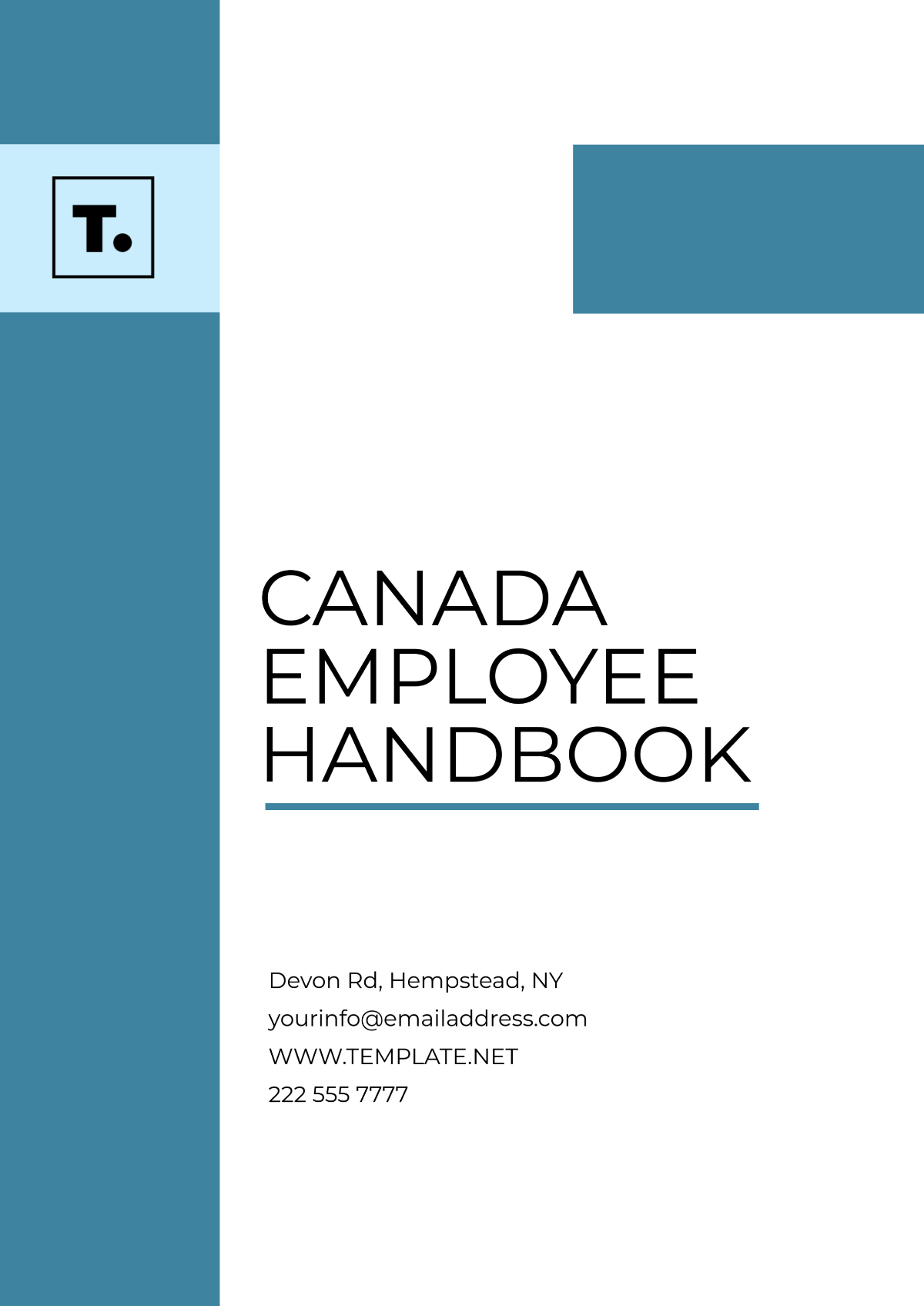I. Introduction
Welcome to the [Your Company Name] Administration Vendor Management Handbook. This handbook serves as a comprehensive guide for all employees involved in vendor management activities within our organization. Effective vendor management is essential for the success of our company, as it ensures that we maintain strong relationships with our suppliers and achieve optimal value from our vendor partnerships.
This handbook outlines the policies, procedures, and best practices that govern vendor management at [Your Company Name]. By adhering to the guidelines provided in this handbook, employees can ensure consistency, efficiency, and compliance in their interactions with vendors.
II. Vendor Management Principles
At [Your Company Name], we are committed to establishing and maintaining strong relationships with our vendors. Our vendor management policy is guided by the following principles:
Transparency and Fairness: We conduct vendor selection processes transparently and fairly, ensuring equal opportunity for all potential vendors.
Quality and Value: We prioritize vendors who provide high-quality products or services at competitive prices, aligning with our company's standards.
Ethical Conduct: We expect all employees to uphold ethical standards in their interactions with vendors, including honesty, integrity, and respect.
Risk Management: We proactively identify and mitigate risks associated with vendor relationships to safeguard the interests of [Your Company Name].
Continuous Improvement: We continuously evaluate and improve our vendor management practices to enhance efficiency and effectiveness.
III. Vendor Selection Process
The vendor selection process at [Your Company Name] involves the following steps:
Needs Assessment: Before initiating the vendor selection process, the department requiring vendor services conducts a thorough needs assessment. This involves identifying the specific requirements, objectives, and performance criteria associated with the goods or services to be procured. By clearly defining our needs upfront, we can effectively evaluate potential vendors based on their ability to meet these requirements.
Market Research: Following the needs assessment, we conduct extensive market research to identify potential vendors who can fulfill our requirements. This research may include exploring industry databases, attending trade shows or conferences, seeking referrals from industry peers, and conducting online searches. The goal is to compile a comprehensive list of qualified vendors who offer products or services that align with our needs and specifications.
Request for Information (RFI): Once a list of potential vendors has been identified, we may issue a Request for Information (RFI) to gather additional details about their capabilities, experience, and offerings. The RFI provides vendors with an opportunity to provide relevant information about their organization, including their qualifications, technical expertise, past performance, and references. This information helps us assess the suitability of vendors for our specific requirements and narrow down the list of potential candidates.
Request for Proposal (RFP): After reviewing responses to the RFI and further refining our vendor shortlist, we may issue a formal Request for Proposal (RFP) to solicit detailed proposals from selected vendors. The RFP outlines our specific requirements, objectives, evaluation criteria, and contractual terms and conditions. Vendors are asked to submit comprehensive proposals that address each aspect of the RFP in detail, including pricing, technical specifications, implementation plans, and support services. The RFP process allows us to compare and evaluate proposals from multiple vendors based on predetermined criteria and select the most suitable candidate(s) for further consideration.
Vendor Evaluation: Upon receiving proposals from vendors, a cross-functional evaluation team is convened to assess the submissions and evaluate each vendor against established criteria. The evaluation criteria may include factors such as cost, quality, technical capabilities, past performance, financial stability, compliance with regulatory requirements, and alignment with our organizational values and objectives. The evaluation team carefully reviews each proposal, scores vendors based on their performance against the criteria, and identifies strengths, weaknesses, and areas for further consideration.
Vendor Selection: Based on the results of the evaluation process, the vendor selection committee makes a recommendation regarding the selection of the preferred vendor(s). The recommendation is based on a thorough analysis of each vendor's proposal, considering factors such as overall value, quality, reliability, and alignment with our strategic objectives. The committee may also consider input from relevant stakeholders, such as end-users, department heads, and procurement professionals, to ensure that the selected vendor(s) can effectively meet the needs of the organization. Once a decision is reached, the selected vendor(s) are notified, and contract negotiations commence.
Contract Negotiation: Following vendor selection, the contract negotiation phase begins, during which we work closely with the chosen vendor(s) to finalize the terms and conditions of the agreement. This includes negotiating pricing, payment terms, delivery schedules, performance metrics, warranties, indemnification provisions, termination clauses, and any other relevant contractual terms. The goal of the negotiation process is to reach a mutually beneficial agreement that protects the interests of both parties and sets clear expectations for the duration of the vendor relationship.
A summary of the vendor selection process is outlined in the table below:
Step | Description |
|---|---|
1. Needs Assessment | Conduct a thorough assessment of requirements and objectives for goods/services procurement. |
2. Market Research | Identify potential vendors through industry databases, trade shows, referrals, and online searches. |
3. Request for Information (RFI) | Issue RFI to gather additional details about vendors' capabilities, experience, and offerings. |
4. Request for Proposal (RFP) | Issue RFP to solicit detailed proposals from selected vendors, outlining specific requirements and evaluation criteria. |
5. Vendor Evaluation | Evaluate vendor proposals based on predetermined criteria such as cost, quality, experience, and compliance. |
6. Vendor Selection | Select preferred vendor(s) based on evaluation results, considering overall value, quality, and alignment with objectives. |
7. Contract Negotiation | Negotiate contract terms and conditions with selected vendor(s), including pricing, payment terms, and performance metrics. |
IV. Contract Negotiation and Management
Contract negotiation and management are pivotal stages in the vendor management lifecycle at [Your Company Name]. This phase ensures that the terms and conditions of agreements are mutually beneficial and effectively align with the organization's objectives. Here's a comprehensive overview of this process:
Scope Definition: Clearly define the scope of work to be performed by the vendor, including deliverables, timelines, and performance expectations. This ensures a shared understanding of project requirements from both parties.
Pricing and Payment Terms: Negotiate pricing and payment terms that are fair, competitive, and reflective of the value provided by the vendor. Consider factors such as volume discounts, milestone payments, and incentives to achieve cost efficiencies.
Service Level Agreements (SLAs): Establish SLAs to define the level of service and support expected from the vendor. These may include response times, resolution times for issues, uptime guarantees, and other performance metrics.
Quality Assurance Standards: Define quality assurance standards and specifications to ensure that deliverables meet agreed-upon quality levels. This may involve setting quality control processes, conducting inspections, and implementing corrective actions when necessary.
Intellectual Property Rights (IPR): Clarify ownership rights for any intellectual property developed or provided by the vendor during the course of the contract. This includes software, designs, inventions, and other proprietary information.
Risk Mitigation Strategies: Identify potential risks associated with the vendor relationship and incorporate risk mitigation strategies into the contract. This may include provisions for liability caps, indemnification clauses, insurance requirements, and dispute resolution mechanisms.
Change Management Procedures: Establish clear procedures for managing changes to the scope, schedule, or deliverables outlined in the contract. This ensures that any modifications are documented, approved, and implemented in a controlled manner.
Performance Metrics and Reporting: Define performance metrics and reporting requirements to monitor the vendor's performance throughout the contract term. This may include regular performance reviews, scorecards, and dashboards to track key indicators and identify areas for improvement.
Compliance and Regulatory Requirements: Ensure that the contract includes provisions for compliance with relevant laws, regulations, and industry standards. This may involve data privacy requirements, security protocols, environmental regulations, and other compliance considerations.
Termination Clause: Include a termination clause that outlines the conditions under which either party may terminate the contract and the process for doing so. This provides clarity and protection in the event that the relationship needs to be dissolved.
Confidentiality and Non-Disclosure: Include confidentiality and non-disclosure provisions to protect sensitive information shared during the course of the contract. This helps safeguard proprietary data and intellectual property rights.
Dispute Resolution Mechanisms: Specify dispute resolution mechanisms, such as mediation, arbitration, or litigation, to address conflicts or disagreements that may arise during the contract term. This promotes timely resolution of issues and preserves the integrity of the vendor relationship.
Contract Governance and Oversight: Establish governance structures and processes to oversee the execution of the contract and ensure compliance with its terms and conditions. This may involve appointing a contract manager, conducting regular reviews, and documenting performance.
V. Performance Monitoring and Evaluation
Performance monitoring and evaluation are integral aspects of vendor management at [Your Company Name]. This phase ensures that vendors deliver on their commitments, meet quality standards, and contribute to the achievement of organizational objectives. Here's a comprehensive overview of this process:
Establishing Performance Metrics: Define clear and measurable performance metrics aligned with the goals and objectives of the vendor relationship. These metrics may include key performance indicators (KPIs) such as quality, timeliness, cost-effectiveness, and customer satisfaction.
Regular Performance Reviews: Conduct regular performance reviews with vendors to assess their performance against established metrics. These reviews provide an opportunity to evaluate progress, identify areas for improvement, and recognize achievements.
Performance Dashboards and Scorecards: Implement performance dashboards or scorecards to track vendor performance in real-time. These tools provide visibility into key metrics and enable stakeholders to monitor performance trends, identify outliers, and take proactive measures as needed.
Feedback and Communication: Maintain open lines of communication with vendors to provide feedback on their performance and address any issues or concerns promptly. Constructive feedback helps vendors understand expectations and make necessary adjustments to improve performance.
Root Cause Analysis: Conduct root cause analysis to identify the underlying reasons for performance issues or discrepancies. This involves analyzing data, identifying contributing factors, and implementing corrective actions to address root causes and prevent recurrence.
Continuous Improvement Initiatives: Encourage vendors to participate in continuous improvement initiatives aimed at enhancing performance and driving innovation. This may involve joint problem-solving, process optimization, and knowledge sharing to achieve mutual benefits.
Performance Improvement Plans: Develop performance improvement plans for vendors who consistently underperform or fail to meet agreed-upon standards. These plans outline specific actions, timelines, and responsibilities for addressing performance gaps and achieving desired outcomes.
Contract Compliance Monitoring: Monitor vendor compliance with contractual obligations, including service levels, deliverables, and timelines. Regular audits and reviews ensure that vendors adhere to the terms and conditions outlined in the contract and meet regulatory requirements.
Customer Satisfaction Surveys: Solicit feedback from internal stakeholders and end-users through customer satisfaction surveys. These surveys assess satisfaction levels with vendor performance, identify areas of concern, and capture suggestions for improvement.
Benchmarking and Best Practices Sharing: Benchmark vendor performance against industry standards and best practices to assess competitiveness and identify opportunities for optimization. Sharing best practices with vendors fosters collaboration and promotes continuous learning and improvement.
Recognition and Rewards: Recognize and reward vendors who consistently exceed expectations and demonstrate exceptional performance. This may include formal commendations, performance bonuses, or extended contract opportunities to incentivize continued excellence.
Escalation Procedures: Establish escalation procedures for addressing significant performance issues or disputes with vendors. These procedures define the steps and responsibilities for escalating issues to higher levels of management and facilitating resolution through mediation or arbitration.
VI. Vendor Relationship Management
Effective vendor relationship management is essential for building strong, collaborative partnerships with our vendors. Key principles include:
Building Trust: Foster trust and mutual respect in our relationships with vendors, based on open communication, honesty, and integrity.
Collaboration: Work collaboratively with vendors to achieve shared goals and objectives, leveraging their expertise and resources to drive mutual success.
Conflict Resolution: Address conflicts or disputes with vendors promptly and professionally, seeking to find mutually acceptable solutions that preserve the relationship.
Continuous Communication: Maintain regular communication with vendors to keep them informed of our needs, priorities, and expectations, and to solicit feedback on their performance.
Relationship Building: Invest time and effort in building strong personal relationships with key contacts at vendor organizations, fostering a sense of partnership and camaraderie.
By effectively managing vendor relationships, we can enhance collaboration, minimize conflicts, and maximize the value generated from our vendor partnerships.
VII. Vendor Risk Management
Vendor risk management is a proactive approach to identifying, assessing, and mitigating risks associated with vendor relationships. Key steps include:
Risk Identification: Identify potential risks associated with vendor relationships, such as financial instability, data security breaches, or regulatory non-compliance.
Risk Assessment: Evaluate the likelihood and potential impact of identified risks, using tools such as risk matrices or risk registers.
Risk Mitigation: Develop strategies to mitigate identified risks, such as conducting due diligence on vendors, implementing contractual safeguards, or diversifying vendor relationships.
Monitoring and Review: Regularly monitor vendor relationships for changes in risk exposure, and periodically review risk management strategies to ensure their effectiveness.
Contingency Planning: Develop contingency plans to respond to and recover from vendor-related disruptions, such as sourcing alternative vendors or activating backup systems.
By proactively managing vendor risks, we can protect [Your Company Name] from potential harm and ensure the continuity of our operations.
VIII. Vendor Governance and Compliance
Vendor governance and compliance ensure that vendor management activities are conducted in accordance with relevant laws, regulations, and organizational policies. Key considerations include:
Legal and Regulatory Compliance: Ensure that vendor management activities comply with applicable laws, regulations, and industry standards, such as data protection regulations or anti-corruption laws.
Contractual Compliance: Monitor vendor compliance with contractual obligations, including performance standards, delivery schedules, and quality requirements.
Documentation and Record-Keeping: Maintain accurate records of vendor contracts, communications, and performance evaluations to support compliance and governance activities.
Audit and Review: Conduct periodic audits and reviews of vendor management processes to identify areas for improvement and ensure compliance with established policies and procedures.
Ethical Conduct: Uphold ethical standards in all vendor management activities, including fair and transparent procurement processes, avoidance of conflicts of interest, and respect for vendor rights.
By adhering to principles of governance and compliance, we can mitigate legal and reputational risks and ensure the integrity of our vendor management processes.
IX. Vendor Training and Development
At [Your Company Name], we recognize the importance of providing training and development opportunities for employees involved in vendor management. Key initiatives include:
Training Programs: Offer training programs and workshops to familiarize employees with vendor management policies, procedures, and best practices.
Skills Development: Provide opportunities for employees to develop key competencies related to vendor management, such as negotiation skills, contract management, and relationship building.
Knowledge Sharing: Facilitate knowledge sharing and collaboration among employees involved in vendor management, encouraging the exchange of best practices and lessons learned.
Vendor Engagement: Offer training and development opportunities for vendors to enhance their understanding of our organization's needs and expectations, fostering stronger and more productive relationships.
Continuous Learning: Encourage employees to pursue continuous learning and professional development in the field of vendor management, staying abreast of emerging trends and best practices.
By investing in the training and development of employees involved in vendor management, we can enhance their effectiveness and contribute to the overall success of our vendor management initiatives.
X. Conclusion
The [Your Company Name] Administration Vendor Management Handbook provides a comprehensive framework for managing vendor relationships effectively and efficiently. By adhering to the policies, procedures, and best practices outlined in this handbook, employees can contribute to the success of our organization and maximize the value derived from our vendor partnerships.
We encourage all employees involved in vendor management activities to familiarize themselves with the contents of this handbook and to consult it as needed when engaging with vendors. Together, we can build strong, collaborative relationships with our vendors and achieve our strategic objectives.
Thank you for your commitment to excellence in vendor management at [Your Company Name].
[Your Company Name] Administration Team

















































